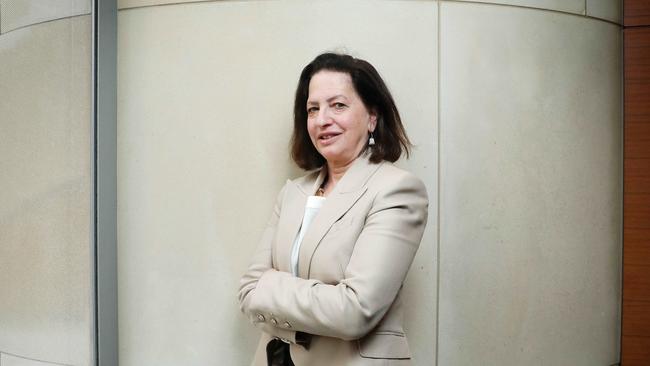Solar rush generates grid risks: AEMO
The market operator has grown increasingly concerned that solar at times generates so much surplus energy that demand falls near zero.

The rapid take-up of rooftop solar has created new security risks to the nation’s power grid, with the problem of low demand in renewables-heavy South Australia seen spreading to Victoria and Queensland, the Australian Energy Market Operator has warned.
While Australia’s world-leading adoption of solar has been hailed for accelerating a transition to renewables, the market operator has grown increasingly concerned by the phenomenon that solar at times generates so much surplus energy that demand falls near zero, destabilising the power system.
The issue is best known in South Australia, which faces potentially having to ban the new installation of rooftop solar, but also looms as an issue for other states with high renewable penetration. AEMO said solutions being worked on in South Australia were now “required urgently” in Victoria and promptly in Queensland. Minimum demand in Victoria is projected to fall from 3000MW in 2019-20 to periods of negative demand by 2027-28 due to a surge in rooftop solar, partly triggered by the state’s solar panel subsidy scheme.
“Due to the continued strong uptake of distributed solar projected, forecast minimum operational demand is declining rapidly,” AEMO said. “By 2025, all regions are expected to experience minimum operation demand in the daytime, not overnight, and in South Australia and Victoria minimum demand could potentially be negative towards the end of the next decade.”
The warning on Victoria in the Electricity Statement of Opportunities, which AEMO uses to forecast the needs of the national electricity market, have dramatically changed since last year’s report due to strong solar growth.
“Minimum demand is forecast to become negative by around 2027 and 2028 due to high projected distributed PV capacity uptake. After 2030, underlying demand growth drivers such as growth in new connections and non-co-ordinated EV and battery storage charging, particularly in Victoria, are forecast to dampen the decline of minimum demand,” AEMO said.
Cutting off rooftop solar in emergency situations and ensuring the renewable technology could remain operating through disturbances to the grid were essential to boost grid security, it noted. Low demand periods could be managed by more active management of solar panels and using energy storage to soak up excess solar supplies.
“We’re going to need to be able to direct distribution utilities and tell them when we need them to shed the solar if for some reason we’re not able to manage it another way and it’s going to compromise the security of the system,” AEMO chief executive Audrey Zibelman told The Australian. “There’s a lot of misgivings I know, but this is not AEMO controlling anything, it’s just saying that when we get into extreme circumstances we have to ask the utilities to shed demand when we don’t have enough supply. We’re also going to have to ask them to create demand by shedding solar when we don’t have enough demand. Hopefully we’ll fix this.”
The issue underlines challenges for the grid from the ageing fleet of coal fired power stations and rapid uptake of variable renewable energy, the Energy Users Association of Australia said.
“Low or negative demand creates an unstable energy system, impacting reliability and system strength. In attempting to manage such a volatile environment, where increasing amounts of variable renewable energy is pushed into the system, AEMO must feel like they are pitching a tent in a hurricane,” EUAA chief executive Andrew Richards said.
“It is the responsibility of governments to carefully consider the unintended consequences of policies that drive variable sources of energy generation into a system already showing signs of stress. We need governments to help quell the coming storm, not add to its ferocity.”
The outlook for the summer has eased, with improved reliability forecast due to an extra 4300 megawatts of renewables due, boosted transmission capacity and reduced peak demand.
AEMO has in the last few years been forced into increasingly frequent and expensive interventions, such as leasing diesel back-up generators and ordering expensive gas-fired plants into the market, to guard against the risk of a thermal generator failing or a change in the weather knocking out renewable generation.
The operator said the declining reliability of coal plants and the exit of the Liddell plant in NSW had raised risks later this decade, underlining the need for more investment in transmission, generation and storage capacity.
“Absent additional investment, the region is forecast to exceed the interim reliability measure from 2023-24 onwards and to be vulnerable to the coincidence of high demands, generator outages and low renewable generation until Snowy 2.0 is commissioned and transmission augmentations allow Snowy 2.0 to help meet peak demand,” AEMO said. “However, the reliability standard is not forecast to be exceeded until 2029-30.”
Energy Minister Angus Taylor said the report highlights the need for new investment and generation to enter the market particularly in NSW which may face reliability issues when there is peak demand, generator outages and low renewable generation.
“We want to avoid a repeat of Victoria’s pitfalls after the closure of the Hazelwood power plant,” Mr Taylor said.“This is why the Government is supporting landmark projects like Snowy 2.0, but the private sector also needs to step up to make concrete commitments to invest in new dispatchable replacement capacity.”


To join the conversation, please log in. Don't have an account? Register
Join the conversation, you are commenting as Logout